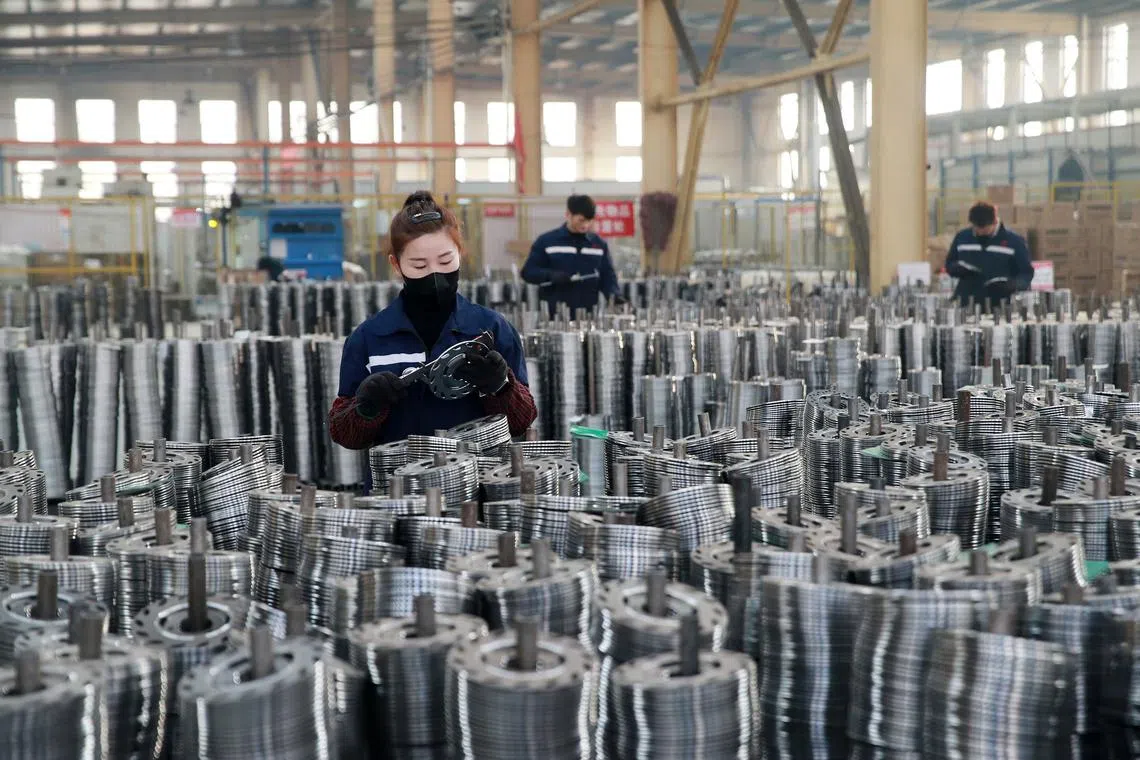For subscribers
Global firms are eyeing Asian alternatives to Chinese manufacturing
Can “Altasia” steal China’s thunder?
Sign up now: Get ST's newsletters delivered to your inbox

Employees working on aluminium products at a factory in Huaibei, China, on Jan 30, 2023.
PHOTO: AFP
The Economist
Follow topic:
In 1987, Panasonic made an adventurous bet on China. At the time, the electronics giant’s home country, Japan, was a global manufacturing powerhouse and the Chinese economy was no larger than Canada’s. So when the company entered a Chinese joint venture to make cathode-ray tubes for its televisions in Beijing, eyebrows were raised. Before long, other titans of consumer electronics, from Japan and elsewhere, were also piling into China to take advantage of its abundant and cheap labour. Three-and-a-half decades on, China is the linchpin of the multitrillion-dollar consumer-electronics industry. Its exports of electronic goods and components amounted to US$1 trillion (S$1.34 trillion) in 2021, out of a global total of US$3.3 trillion. These days, it takes a brave firm to avoid China.
Increasingly, however, under a weighty combination of commercial and political pressures, foreign companies are beginning to pluck up the courage if not to leave China entirely, then at least to look beyond it for growth. Chinese labour is no longer that cheap: Between 2013 and 2022 manufacturing wages doubled, to an average of US$8.27 per hour. More important, the deepening techno-decoupling between Beijing and Washington

